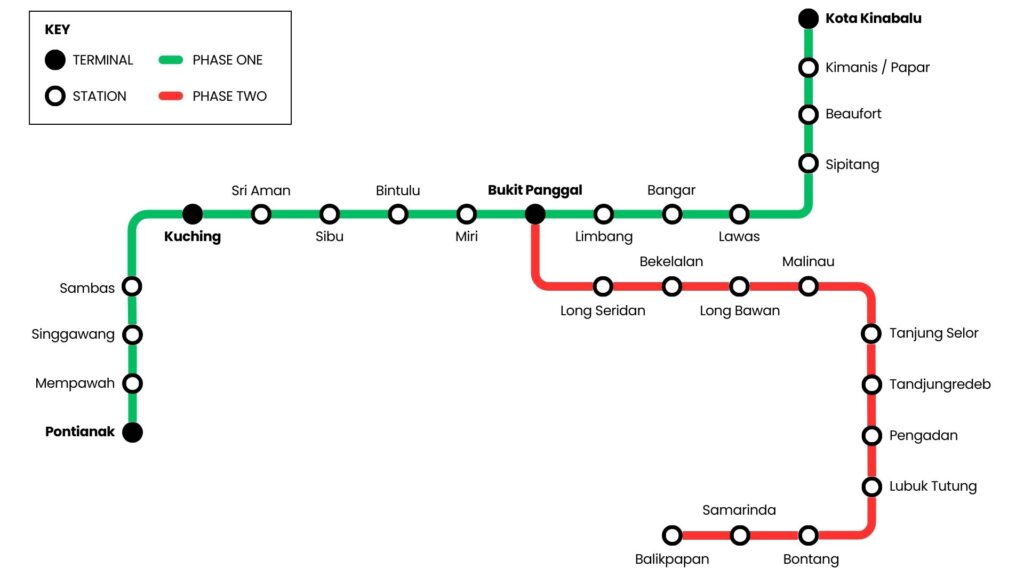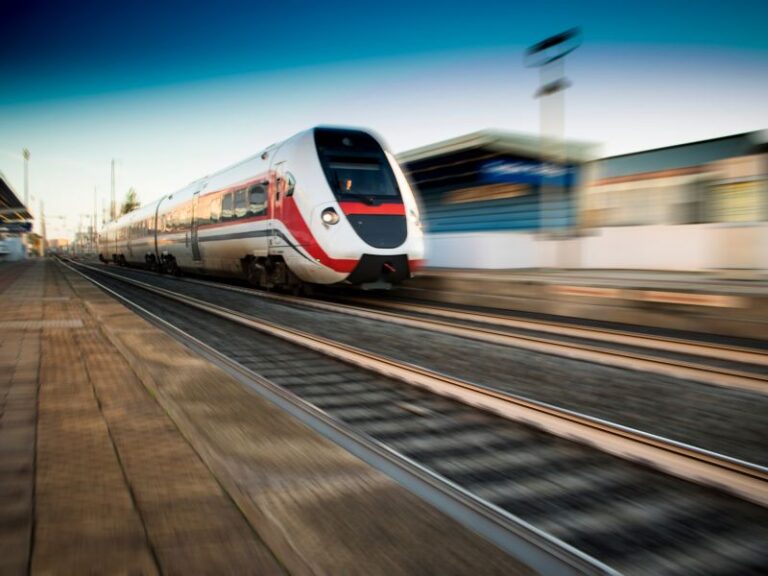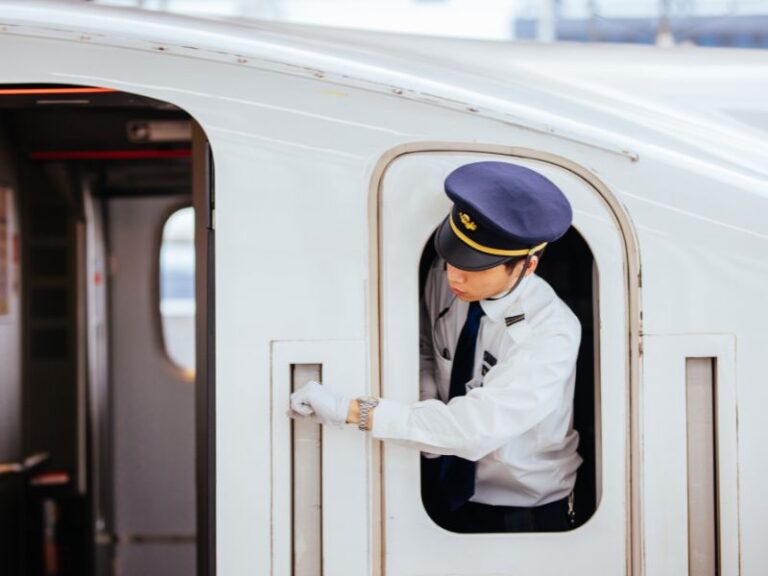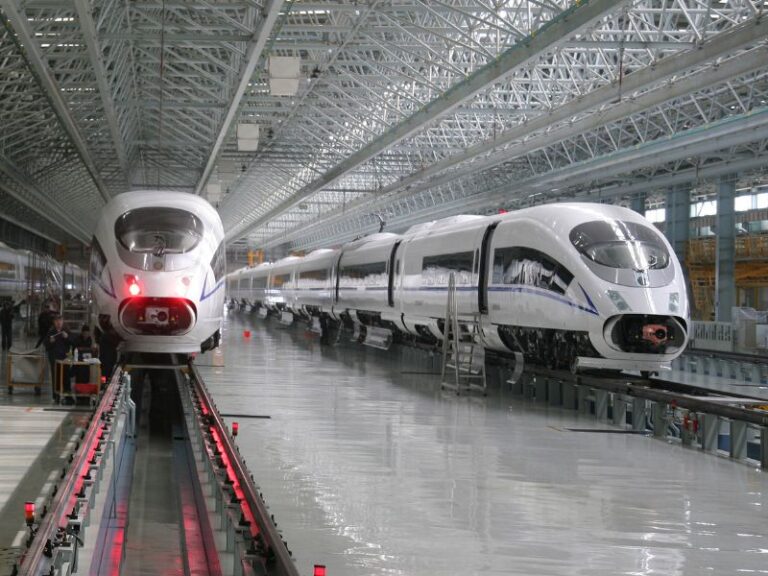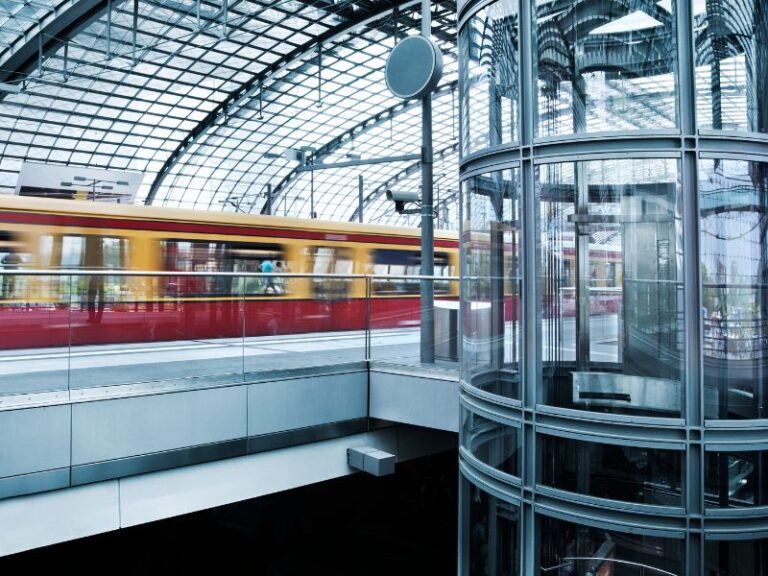
Trans-Borneo Railways
Borneo's first high-speed bullet train network.
Objectives
Rural Development
Although Malaysian and Indonesian Borneo has undergone large-scale urbanisation in the past few decades, a significant portion of its population remains detached and living in under-developed rural communities scattered across the island.
Global Market Access
Despite its size and economic potential via abundant natural resources, Borneo states do not share the same connection with the wider global market than much of its neighbouring region.
Socio-cultural Exchange
With over 30 different ethnicities, the island has among the most diverse concentration of cultures on the planet. Accelerating the exchange of people, goods, services and values would drive forward social connection unlike ever before.
West Coast Transformation
As much of the island’s economic activity is powered by the western coast, solidifying its connection would, in effect, create a single mega-region and heavy hitter in the regional market.
Market Efficiency
Reduction in costs and slashing the time of transfer for goods to enter the market will catalyse a quantum leap in productivity for the islands shared economy.
Employment Opportunities
The introduction of new technologies and industries through the Trans-Borneo Railways (TBR) would undoubtably release a flood of new employment opportunities for locals.
Bullet Train
SPEED & EFFICIENCY
The bullet train, or High Speed Railway, is a type of passenger train which operates on high-speed railway network. Capable of reaching a maximum speed of 320km or more per hour, the bullet train offers passengers an exceptionally unique and efficient travel experience.
POWERFUL SYMBOLISM
The bullet train technology is a symbol of an advance mode of land transportation that has put many countries interest to portray both economic and political advances
SUSTAINABLE & FUTURE-PROOF
Introduction of this technology to this region will enhance human interaction to a different level and will be sustainable for the next 50 years or more without much competition and technological change
1620km Track
AVG. 150km between stations
300-350km/h speed
30MIN. AVG. JOURNEY
Proposed Route
Phase One of construction will aim to connect the economic powerhouses of the western coastline cities to the east; starting at Pontianak, West Kalimantan, and ending at Kota Kinabalu, Sabah.
PHASE ONE – MAIN LINE
- Kota Kinabalu
- Kimanis / Papar
- Beaufort
- Sipitang
- Lawas
- Bangar
- Limbang
- Bukit Panggal
- Miri
- Bintulu
- Sibu
- Sri Aman
- Kuching
- Sambas
- Singgawang
- Mempawah
- Pontianak
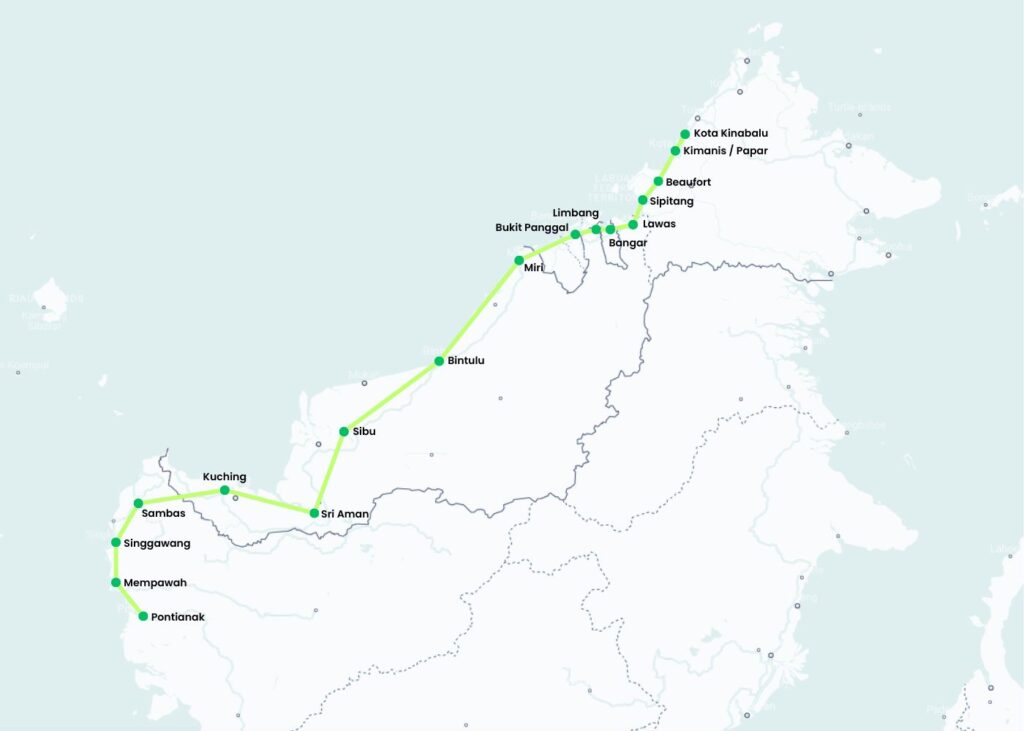
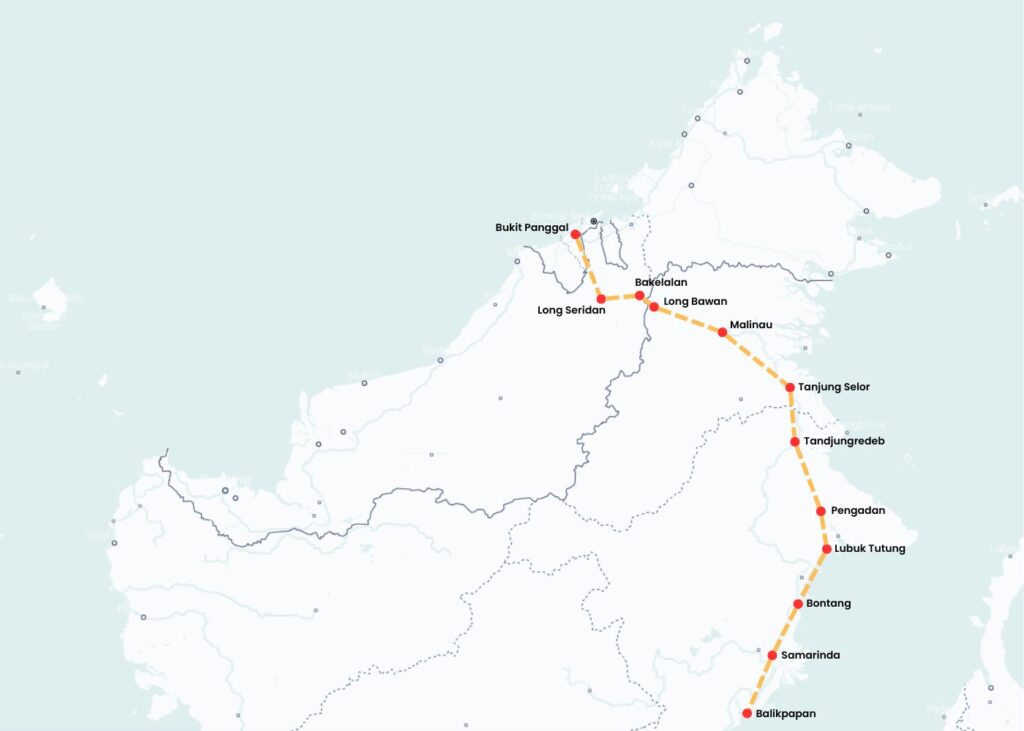
Phase Two will then break into North and East Kalimantan to connect the Main Line with Borneo’s largest city, Samarinda, and later the future Indonesian capital of Nusantara.
PHASE TWO
- Bukit Panggal
- Long Seridan
- Bekalalan
- Long Bawan
- Malinau
- Tanjung Selor
Tandjungredeb
- Pengadan
- Lubuk Tutung
- Bontang
- Samarinda
- Balikpapan
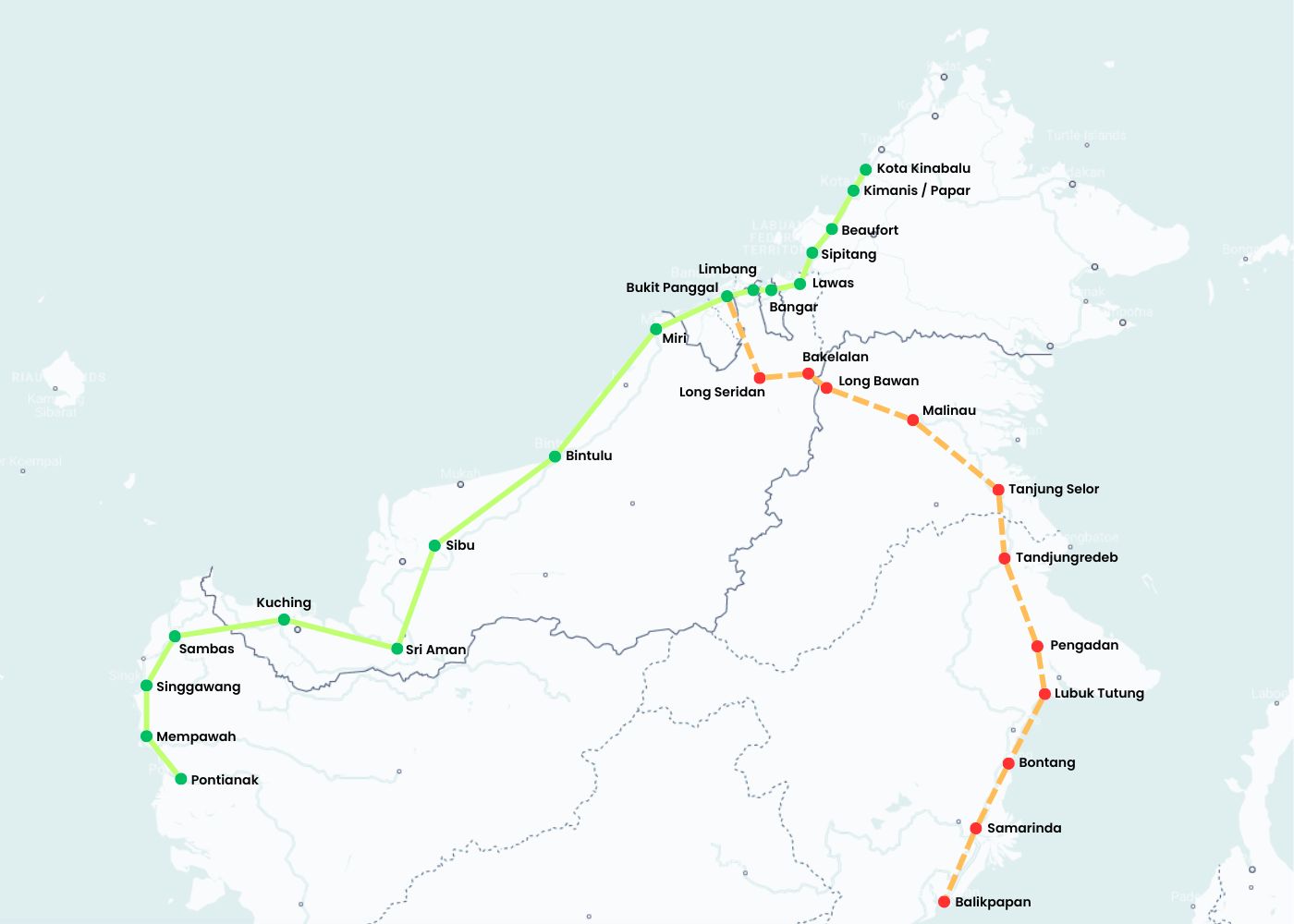
Terminals & Stations
The Trans-Borneo Railways (TBR) will host four terminals, serving as the main hubs for mass transport, along with twenty-four stations webbed across the island.
Both lines will connect at the strategically located Bruneian district of Tutong, serving as the central hub for the TBR.
